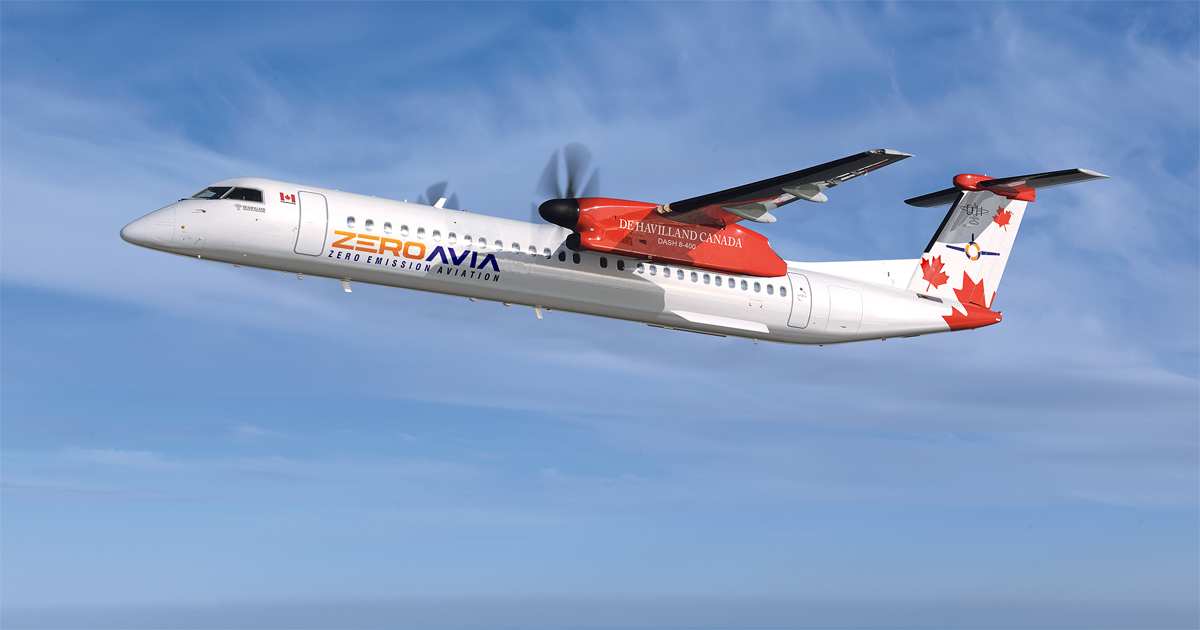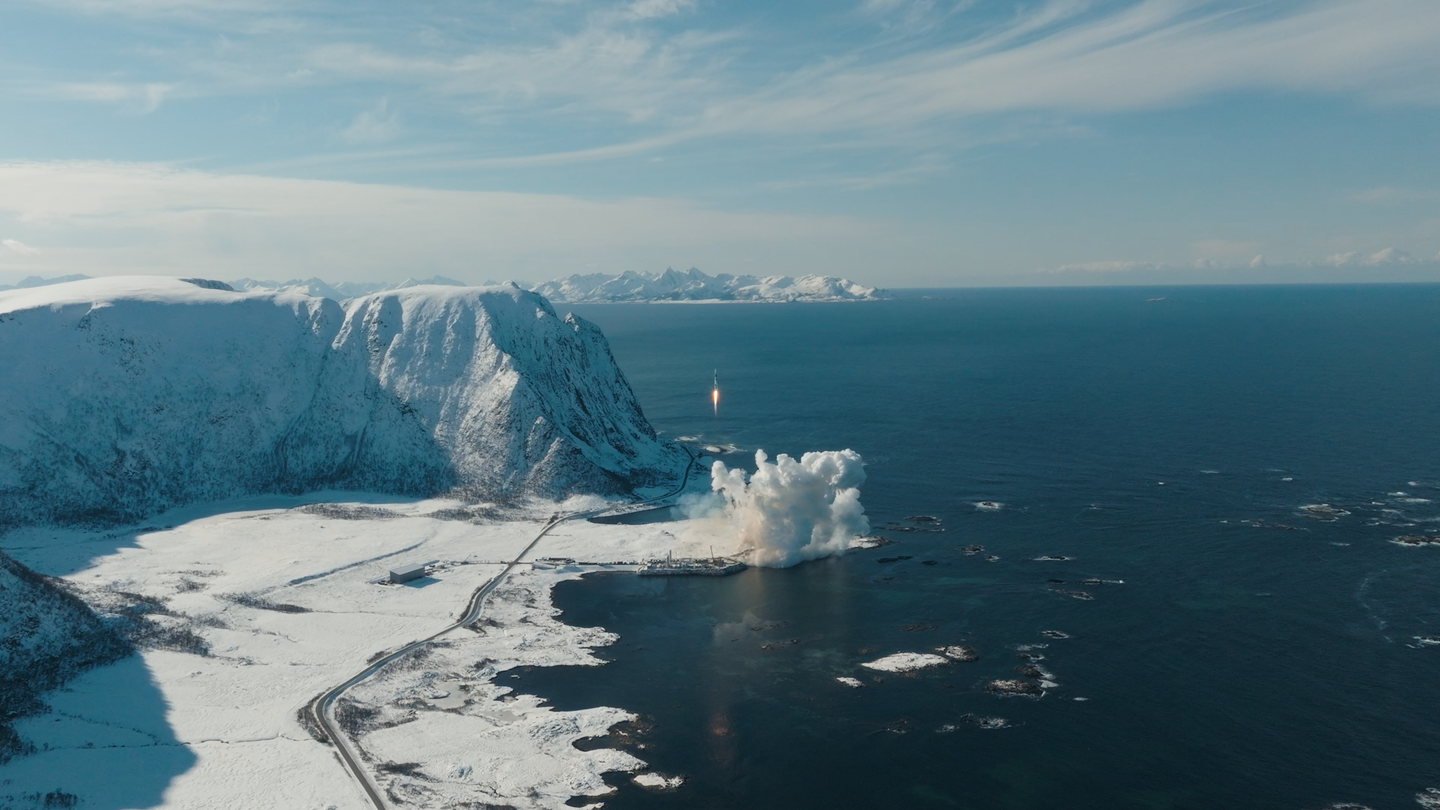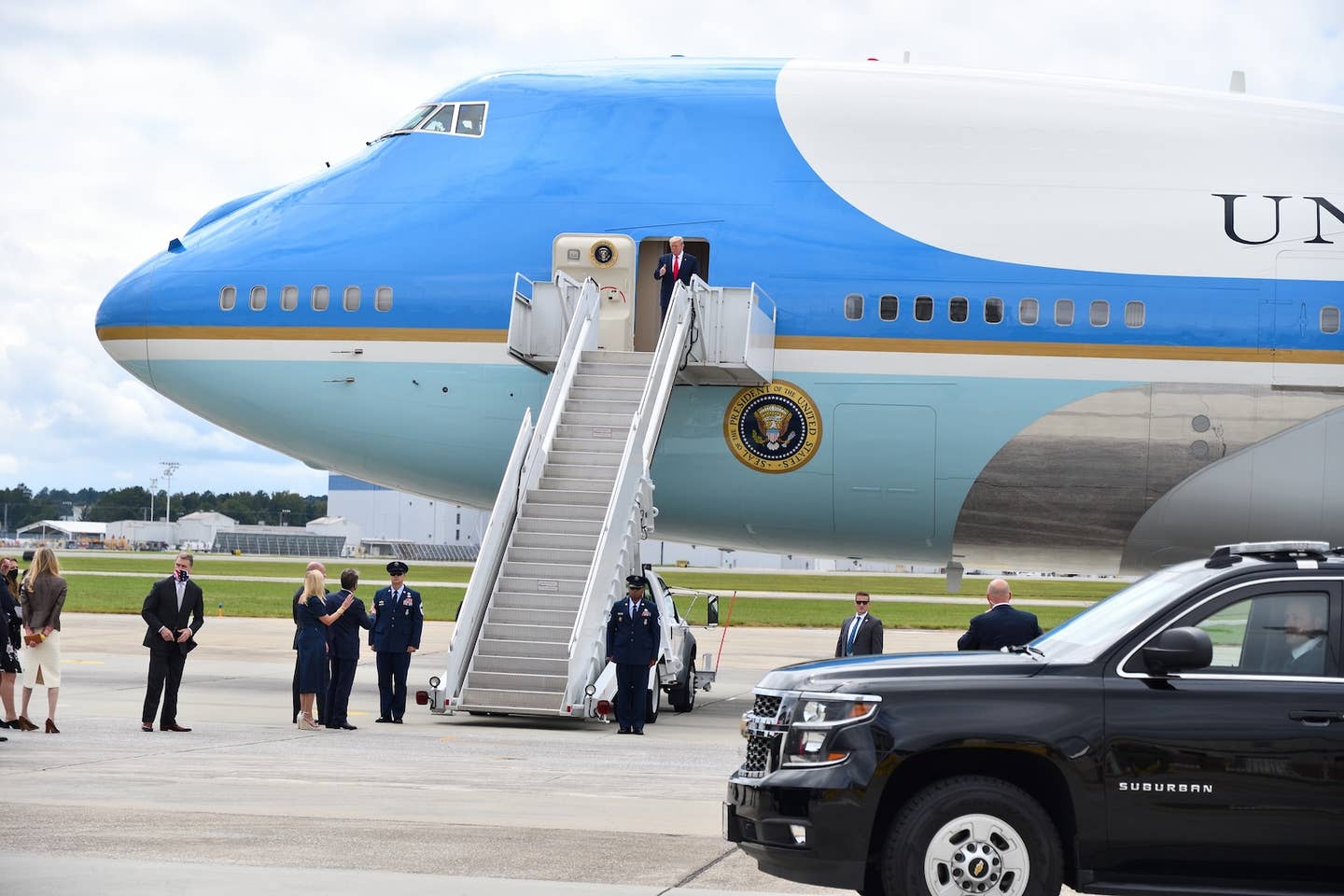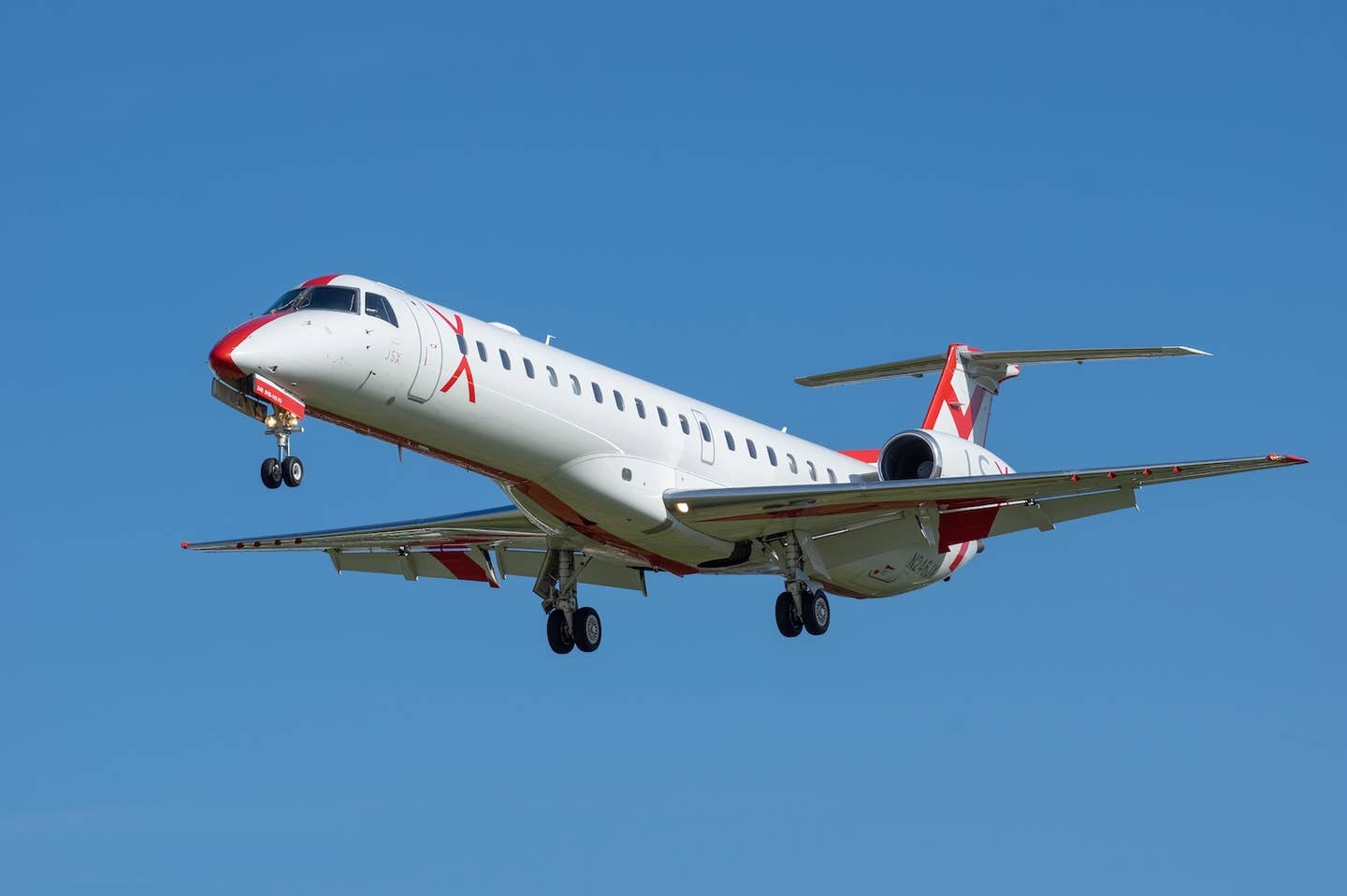
Under the terms of the deal, de Havilland Canada will have the option to purchase 50 ZeroAvia hydrogen-electric engines. Credit: ZeroAvia
Hydrogen-electric aircraft developer ZeroAvia and de Havilland Aircraft of Canada Limited have entered into a memorandum of understanding (MOU) that will allow ZeroAvia to develop a powerplant program in which its hydro-electric engines can be used on old and new de Havilland Canada aircraft models.
Once terms of the deal are finalized, de Havilland Canada will have the option to purchase 50 ZeroAvia hydrogen-electric engines, ZeroAvia shared in a statement Tuesday.
Linefit and Retrofit Program
The linefit program is being designed to serve de Havilland’s Dash 8-400 turboprop aircraft, which is currently operated by more than 600 customers. The companies plan to develop a service bulletin for the equipment’s type certificate for new aircraft to use the ZeroAvia's 2MW+ powertrain (ZA2000).
Demonstrator Model
To test its capabilities, the companies will work together on a demonstrator model that they hope to use to speed up the certification process and appeal to customers. It will also be used to aid in route selection, and which these companies hope to be available commercially by 2027.
Developing Engine, Airframe & Customer Synergy
“Partnering with de Havilland Canada puts ZeroAvia on a defined pathway to line-fitting into new airframes and signals OEM appetite to make the switch to certified, zero-emission propulsion as soon as possible,” ZeroAvia CEO Val Miftakhov said in the same statement.
This announcement follows early news this week that United Airlines (NASDAQ: UAL) and Alaska Airlines (NYSE: ALK) each contributed toward a $35 million fund raise for ZeroAvia. United also announced that it planned to buy as many as 100 engines from the manufacturer.
In October, the Alaska Air Group entered a development agreement with ZeroAvia for its powertrains to be used on its Dash 8-400. The de Havilland Canada MOU will improve ZeroAvia’s ability to deploy its powertrain close to its timeline.
Dave Riggs, chief transformation officer for de Havilland Canada called the partnership a “climate-friendly” option for their customers.
ZeroAvia is initially targeting 500-mile range, 10- to-20-seat aircraft that can be used across all commercial market segments. The company suggested that these funds raised will allow it to begin working toward the 40-to-80-seat aircraft segment, first for turboprops in 2026, and then regional jets by 2028.
For its ZA600 program, ZeroAvia hopes to fly a 19-seat aircraft in a hybrid configuration in weeks to come, and fly a hydrogen-electric power aircraft in 2022.
For its ZA2000 program, the goal is to complete full-thrust ground demonstrations of 1.8MW engines in 2022, earn certification of ZA2000 engines on 40-to-80 seat, 700 nm aircraft by 2026 and extend the ZA2000 application to 90 aircraft by 2027.

Sign-up for newsletters & special offers!
Get the latest FLYING stories & special offers delivered directly to your inbox



![United Airlines secures FAA approval for Starlink, with first commercial flights set for May. Starlink offers 50x faster internet, free for MileagePlus members. [Courtesy of United Airlines]](https://www.flyingmag.com/uploads/2025/03/UnitedAirlines_Starlink_Image.jpg?auto=webp&auto=webp&optimize=high&quality=70&width=1440)


